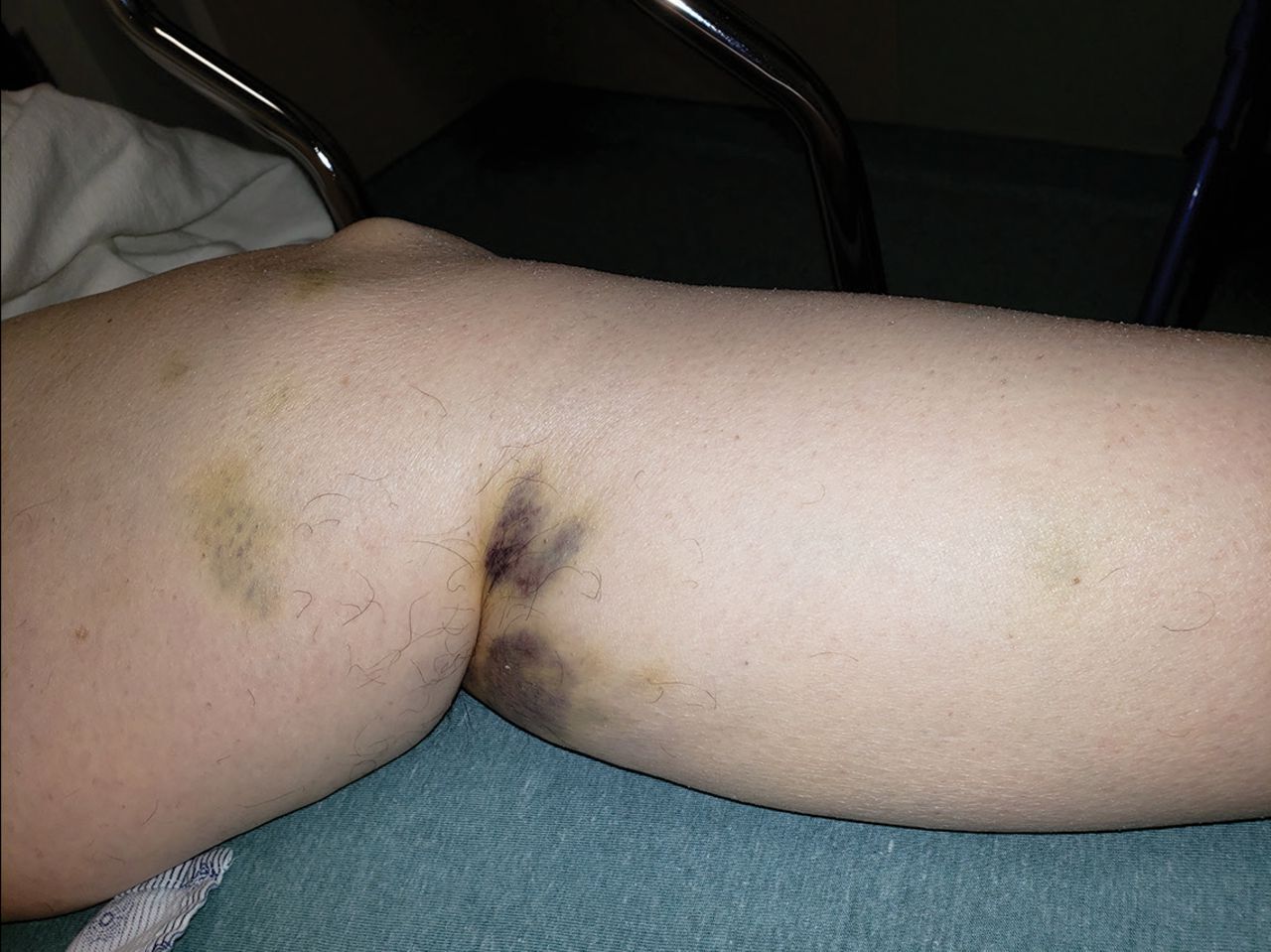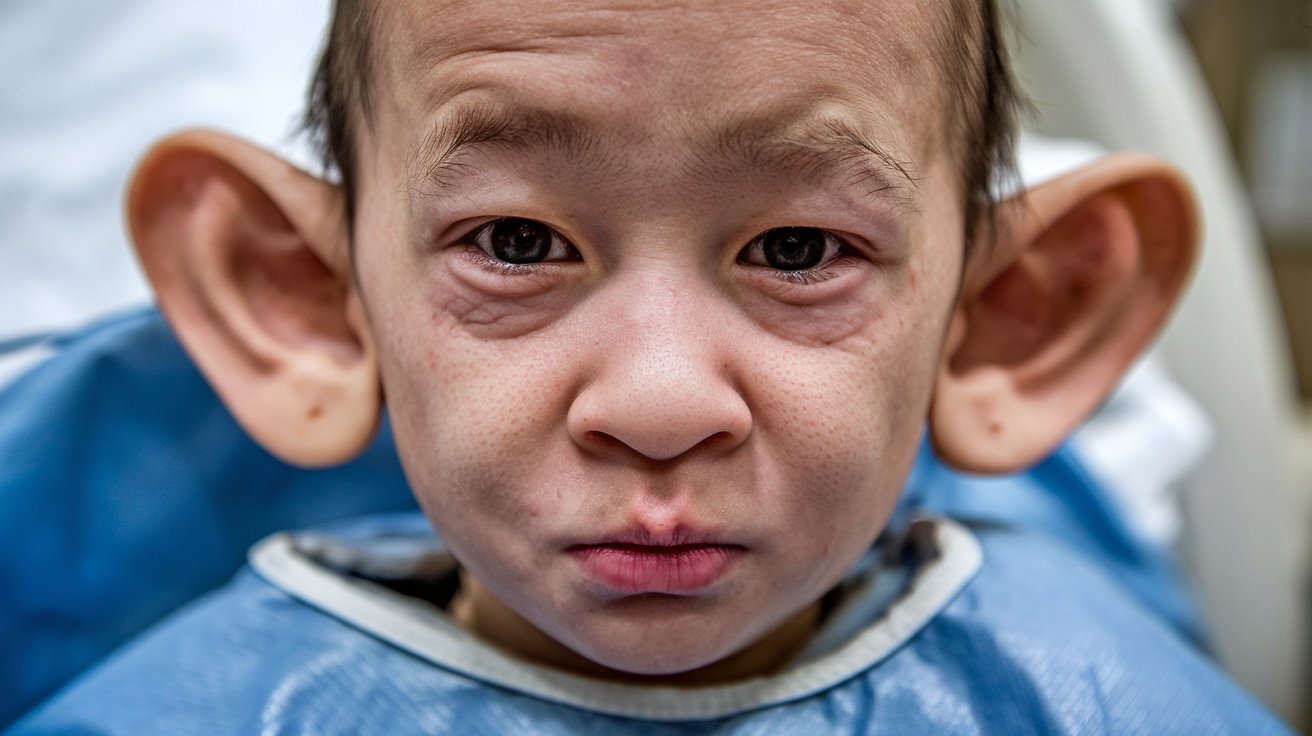
What is Paris-Trousseau Syndrome? Paris-Trousseau Syndrome (PTS) is a rare genetic disorder that affects platelet function, leading to mild bleeding tendencies. This condition is linked to a deletion on the long arm of chromosome 11 (11q). Symptoms often include easy bruising, petechiae (small red spots on the skin), and occasional nosebleeds. The platelets in individuals with PTS usually have abnormal alpha-granules, which are crucial for clot formation. Many patients also experience thrombocytopenia, a condition characterized by low platelet counts. The genetic basis of PTS involves deletions or mutations in the FLI1 gene, which plays a vital role in platelet production.
Key Takeaways:
- Paris-Trousseau Syndrome (PTS) is a rare genetic disorder causing mild bleeding tendencies due to platelet abnormalities and chromosome 11 deletion. It may also lead to facial dysmorphism and immunodeficiency.
- Diagnosing and managing PTS involves genetic analysis, laboratory tests, and symptom management. Patients may experience varying prognosis and complications, highlighting the need for further research and patient support.
What is Paris-Trousseau Syndrome?
Paris-Trousseau Syndrome (PTS) is a rare genetic disorder that affects platelet function, leading to mild bleeding tendencies. This condition is linked to a deletion on chromosome 11. Let's dive into some key facts about this syndrome.
-
Definition: Paris-Trousseau Syndrome is an inherited disorder that affects platelet function, causing mild bleeding tendencies. It is associated with a deletion on the long arm of chromosome 11 (11q).
-
Symptoms: Symptoms include easy bruising, petechiae (small red spots on the skin), and occasional nosebleeds. Severe bleeding episodes are rare.
-
Platelet Abnormalities: Platelets in PTS patients often have abnormal alpha-granules, which are crucial for clot formation and platelet aggregation.
-
Thrombocytopenia: Many patients experience thrombocytopenia, a condition characterized by low platelet counts. Some may have normal counts but dysfunctional platelets.
Genetic Basis and Clinical Presentation
Understanding the genetic basis and clinical presentation of PTS helps in diagnosing and managing the condition effectively.
-
Genetic Basis: PTS involves deletions on chromosome 11 (11q). The FLI1 gene, located on this chromosome, plays a crucial role in platelet production.
-
Clinical Presentation: Symptoms vary widely. Some individuals experience mild symptoms only during stress or injury, while others may have more severe bleeding episodes.
-
Dysmegakaryopoiesis: This condition, where the bone marrow produces abnormal megakaryocytes (cells responsible for producing platelets), is a hallmark of PTS.
-
Giant Granules: Abnormal platelets in PTS often contain giant granules, visible under electron microscopy. These granules are a diagnostic feature.
Molecular Data and Chromosome Deletion
Molecular data and chromosome deletions provide insights into the underlying causes of PTS.
-
Molecular Data: Molecular analyses show that the FLI1 gene is deleted in most PTS patients, disrupting normal megakaryocyte function and leading to dysfunctional platelets.
-
Chromosome Deletion: The deletion on chromosome 11q is typically a contiguous gene deletion, meaning multiple genes are deleted in a single region, leading to complex symptoms.
Prevalence and Gender Distribution
Understanding the prevalence and gender distribution of PTS helps in identifying and diagnosing the condition.
-
Prevalence: PTS is extremely rare, estimated to occur in fewer than 1 in 100,000 births.
-
Gender Distribution: Some evidence suggests females may be more commonly affected than males, though more research is needed.
Associated Conditions and Complications
PTS is often associated with other conditions and complications that can impact the patient's quality of life.
-
Facial Dysmorphism: Some individuals with PTS may exhibit facial dysmorphism, including a high prominent forehead, facial asymmetry, and widely spaced eyes.
-
Immunodeficiency: Patients often have immunodeficiency, leading to frequent infections of the ears, respiratory tract, and skin.
-
Infections: The immunodeficiency increases the risk of infections, ranging from mild to severe, requiring medical intervention.
-
Surgical Considerations: Patients may need blood or platelet transfusions before and during surgery to minimize bleeding risks.
Diagnostic Challenges and Laboratory Tests
Diagnosing PTS can be challenging due to its rarity and nonspecific symptoms. Laboratory tests play a crucial role.
-
Diagnostic Challenges: Diagnosing PTS requires a combination of clinical findings, laboratory tests, and genetic analysis.
-
Laboratory Tests: Tests may include peripheral blood smears, electron microscopy to visualize giant granules, and molecular analysis to detect FLI1 gene deletions.
Treatment Options and Prognosis
While there is no specific treatment for PTS, managing symptoms and preventing complications is crucial.
-
Treatment Options: Managing symptoms involves avoiding medications that affect platelet function, using anticoagulants judiciously, and considering blood or platelet transfusions as needed.
-
Prognosis: Prognosis varies widely. Some individuals experience mild symptoms and lead relatively normal lives, while others may have more severe complications.
Complications and Research Needs
Understanding potential complications and the need for further research is essential for improving patient care.
-
Complications: Complications can include severe bleeding episodes, infections due to immunodeficiency, and other systemic issues related to the chromosomal deletion.
-
Research Needs: Further research is needed to fully understand the pathophysiology of PTS and identify specific genes and their functions associated with the syndrome.
Clinical Guidelines and Patient Support
Developing clinical guidelines and providing patient support are crucial for managing PTS effectively.
-
Clinical Guidelines: Developing guidelines for PTS management is essential, including recommendations for diagnostic procedures, treatment strategies, and preventive measures.
-
Patient Support: Providing support to patients and their families includes access to specialized care, patient education, and psychological support to manage the emotional impact of living with a rare genetic disorder.
Global Awareness
Raising global awareness about PTS can improve diagnosis rates and care for affected individuals.
- Global Awareness: Raising awareness about rare genetic disorders like PTS is important for improving diagnosis rates and providing better care. This can be achieved through collaborative research efforts, public education campaigns, and advocacy programs.
Understanding Paris-Trousseau Syndrome
Paris-Trousseau Syndrome (PTS) is a rare genetic disorder that affects platelet function, leading to mild bleeding tendencies. It stems from deletions on the long arm of chromosome 11, particularly impacting the FLI1 gene. Symptoms range from easy bruising and nosebleeds to more severe bleeding episodes. Abnormal alpha-granules in platelets and thrombocytopenia are common features. Diagnosing PTS can be tricky due to its rarity and nonspecific symptoms, requiring a mix of clinical findings, lab tests, and genetic analysis. While there's no specific treatment, managing symptoms and preventing bleeding is crucial. Patients often need support for frequent infections due to immunodeficiency. Raising awareness and further research are essential for better diagnosis and care. Understanding PTS helps in providing appropriate management strategies and improving the quality of life for those affected.
Frequently Asked Questions
Was this page helpful?
Our commitment to delivering trustworthy and engaging content is at the heart of what we do. Each fact on our site is contributed by real users like you, bringing a wealth of diverse insights and information. To ensure the highest standards of accuracy and reliability, our dedicated editors meticulously review each submission. This process guarantees that the facts we share are not only fascinating but also credible. Trust in our commitment to quality and authenticity as you explore and learn with us.


